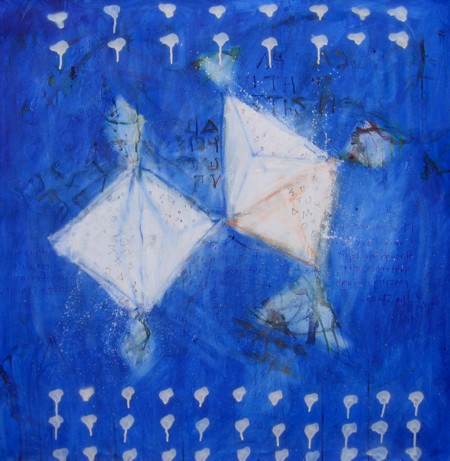
Through the Floor of the Lapis Lazuli
Voltaire acknowledged that, "four thousand volumes of metaphysics will not teach us what the soul is."1 William James believed that our position in relation to the whole of the universe was similar to that of our pets to the whole of a human life. They take part in the scenes of our lives but have no idea of the significance of the events. They are only tangent to the meaning of world history in the same way that "we are tangent to the wider life of things."2 That is a humbling way to look at things. Yet, if I am honest, I do sometimes feel like I am wandering through the neighborhood expecting at any moment to see my picture tacked to a telephone pole.
James thought people generally fell into two categories. First, there is the tender-minded temperament, which is religious and likes to have definite beliefs to follow. Then there are the tough-minded, who are materialistic, irreligious, and go by the facts.3 I'm usually a little of both, depending on my mood. Carl Jung was probably right when he said we are mostly just afraid to look inside ourselves instead of looking to others. He wrote, "We have an abysmal fear of that lurking horror, our personal unconscious. That the improvement of the whole begins with the individual, even with myself, never enters our heads."4
Jung shares an ancient Buddhist text (the Sutra of Meditation on Amitāyus), which describes how an advanced yogi's gaze can penetrate through the floor of lapis lazuli and into the depths of the secrets of the unconscious. Jung used this metaphorically to describe how we interact with the world on the outside through the chaos of our everyday lives. The person who is willing and brave enough to peek into the depths of their personal unconscious, the place "which contains all that one would like to forget, and all that one does not wish to admit to oneself or to anybody else, and which one prefers to believe is not true somehow."5
The floor of lapis lazuli is not transparent for us until we turn our gaze from the outside and begin the inward introspection. Jung says, "One must pay to the last penny before the floor of lapis lazuli can become transparent."6 The Buddha was advising us to give up our limited pet perspective and in the place of the tangent view of our ego-self we can gaze at the splendor of the land on the other side of the floor of lapis lazuli.
I wonder who will take the "missing" sign down.
1. Voltaire, A Philosophical Dictionary, "Soul."
2. James, W., Pragmatism, p.299
3. Durant, W., The Story of Philosophy, Simon & Schuster, 1953, p.385
4. Jung, C., The Psychology of Eastern Meditation, C.W. 11, par.940
5. Ibid. par.939
6. Ibid. par.942
